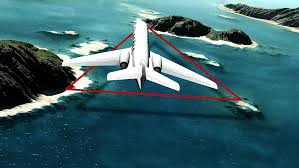The ocean is a vast and mysterious frontier that covers more than 70% of the Earth’s surface. It holds many secrets, from undiscovered species to shipwrecks lost to time. Yet, of all the ocean’s marvels, one of the most fascinating questions is: what is the deepest part of the ocean? The answer lies in the Pacific Ocean, within a dramatic undersea trench known as the Mariana Trench, and more specifically, a region called the Challenger Deep.
The Mariana Trench: Earth’s Deepest Natural Feature
The Mariana Trench is located east of the Philippines and south of Japan, in the western Pacific Ocean. It extends for about 2,550 kilometers (1,580 miles) and forms a boundary between two tectonic plates—the Pacific Plate and the Mariana Plate. This trench is a product of a process known as subduction, where one tectonic plate is forced beneath another, forming deep oceanic trenches in the process.
At its deepest point, the Mariana Trench reaches an estimated depth of 10,984 meters (36,037 feet), although various measurements may differ slightly due to the difficulty of surveying such an extreme environment. This point is known as Challenger Deep, and it is considered the deepest known point in Earth’s seabed.
To put that depth into perspective, if Mount Everest were placed into the Mariana Trench, its peak would still be submerged by over a mile (about 2 kilometers) of water.
Challenger Deep: The Ultimate Abyss
Challenger Deep was named after HMS Challenger, a British Royal Navy ship that conducted the first comprehensive survey of the trench in 1875. Using weighted sounding equipment, the expedition recorded depths greater than 8,000 meters, a groundbreaking achievement at the time.
Modern measurements, aided by sonar and unmanned submersibles, have since refined these figures. In 2010, the National Oceanic and Atmospheric Administration (NOAA) used sonar mapping and calculated the depth of Challenger Deep to be approximately 10,994 meters (36,070 feet). In 2019, explorer and former naval officer Victor Vescovo descended to a measured depth of 10,928 meters (35,853 feet) in his submersible DSV Limiting Factor, setting a new manned dive record.
Life in the Deepest Waters
One might assume such an environment—cold, dark, and under crushing pressure—would be devoid of life. However, scientists have discovered that even in the ocean’s deepest parts, life thrives. Unique species of amphipods, sea cucumbers, bacteria, and other microorganisms have been found in the Mariana Trench, including at Challenger Deep.
The pressure at this depth exceeds 1,000 times the atmospheric pressure at sea level. Temperatures are just above freezing, and no sunlight penetrates this zone, called the hadalpelagic zone. Creatures that live here have evolved incredible adaptations: some have no eyes, others possess gelatinous bodies to withstand pressure, and many rely on marine snow—organic particles that drift down from the upper layers of the ocean—for sustenance.
Human Exploration of the Deep
Exploring the deepest part of the ocean is no easy feat. It requires highly specialized equipment capable of withstanding the extreme pressure and temperature.
The first manned descent into Challenger Deep was made by Jacques Piccard and Don Walsh aboard the bathyscaphe Trieste on January 23, 1960. They reached a depth of approximately 10,916 meters (35,814 feet), remaining at the bottom for about 20 minutes before safely ascending.
After that historic dive, there was a long hiatus in manned exploration until 2012, when James Cameron, the famous filmmaker and ocean enthusiast, piloted the Deepsea Challenger to a solo dive to the bottom of the trench. His expedition reached a depth of 10,908 meters (35,787 feet), making him the first person to make a solo descent into Challenger Deep.
In recent years, technological advancements have enabled more detailed explorations. Autonomous underwater vehicles (AUVs) and remotely operated vehicles (ROVs) are now used for scientific missions to study deep-sea geology, biology, and chemistry.
Why Does the Deepest Part of the Ocean Matter?
Understanding the deepest parts of the ocean is more than just a scientific curiosity—it has profound implications for science, medicine, climate change, and biodiversity.
-
Climate Insights: The deep ocean plays a crucial role in regulating the Earth’s climate by storing vast amounts of heat and carbon dioxide.
-
Unique Life Forms: Studying extremophiles (organisms that live in extreme environments) can help scientists understand how life might exist on other planets and moons, such as Europa or Enceladus.
-
Medical Discoveries: Some deep-sea organisms produce unique enzymes and compounds that have potential medical applications, such as in cancer research or antibiotic development.
-
Geological Knowledge: The ocean floor is constantly reshaped by tectonic activity. Studying these processes helps scientists understand earthquakes and tsunamis better.
The Future of Deep Sea Exploration
Despite being the deepest known part of our planet, Challenger Deep remains largely unexplored. According to some estimates, less than 20% of the ocean floor has been mapped in high resolution. Organizations like NOAA, NASA (which collaborates on deep-sea projects for planetary comparisons), and private companies are investing more resources into oceanic exploration.
New submersibles, better sensors, and satellite-assisted mapping are paving the way for future expeditions. Moreover, increasing interest in deep-sea mining and the need for conservation make it more important than ever to understand these fragile and mysterious environments.
Final Thoughts
The Challenger Deep in the Mariana Trench is not just the deepest part of the ocean—it is a symbol of how much we still have to learn about our own planet. As we advance technologically and scientifically, the secrets of the abyss may unlock answers to age-old questions about life, Earth’s formation, and perhaps even the future of humanity.
Exploring the deepest depths reminds us that while we often look to the stars for mystery and inspiration, some of the greatest enigmas still lie beneath our oceans.








